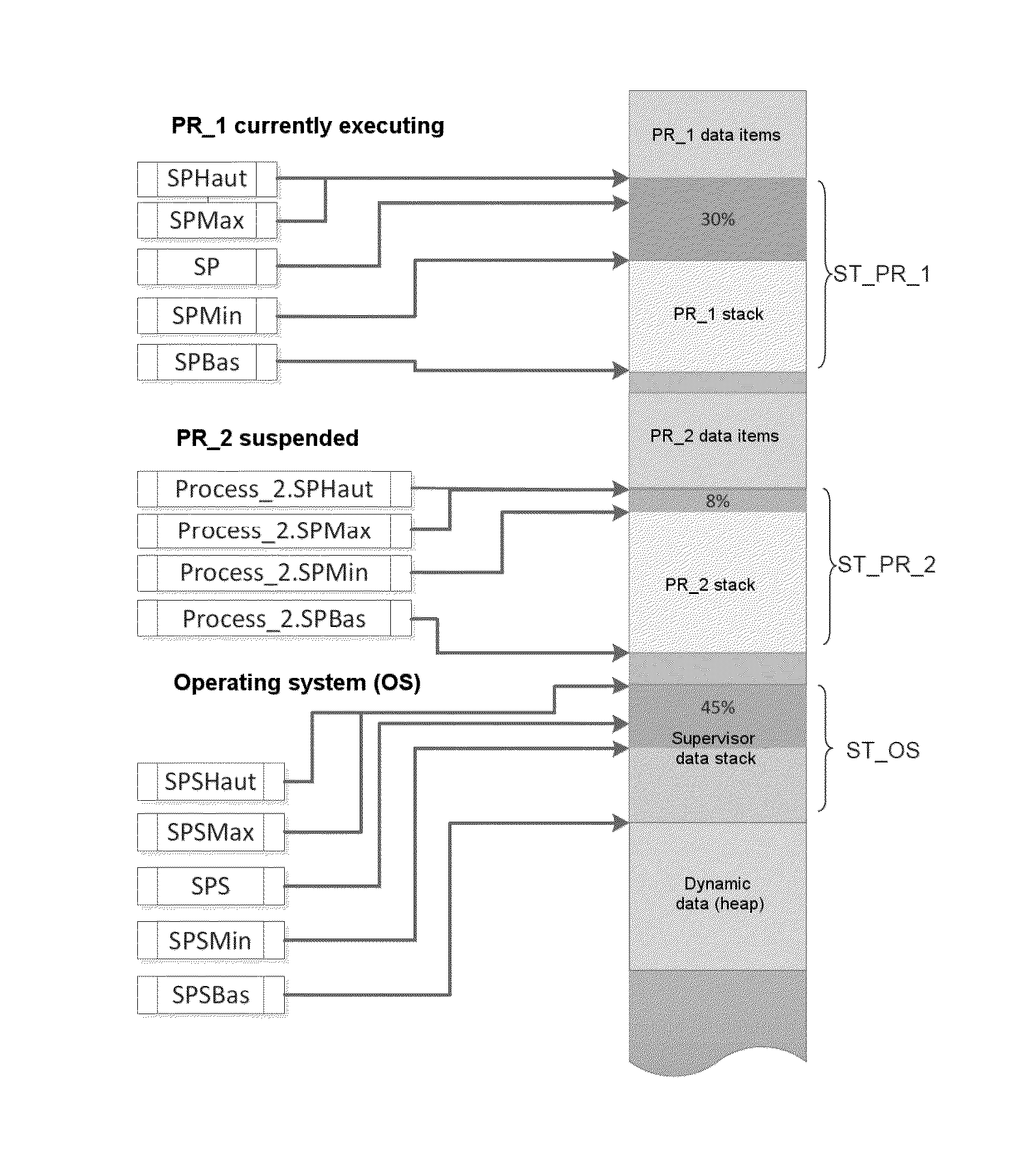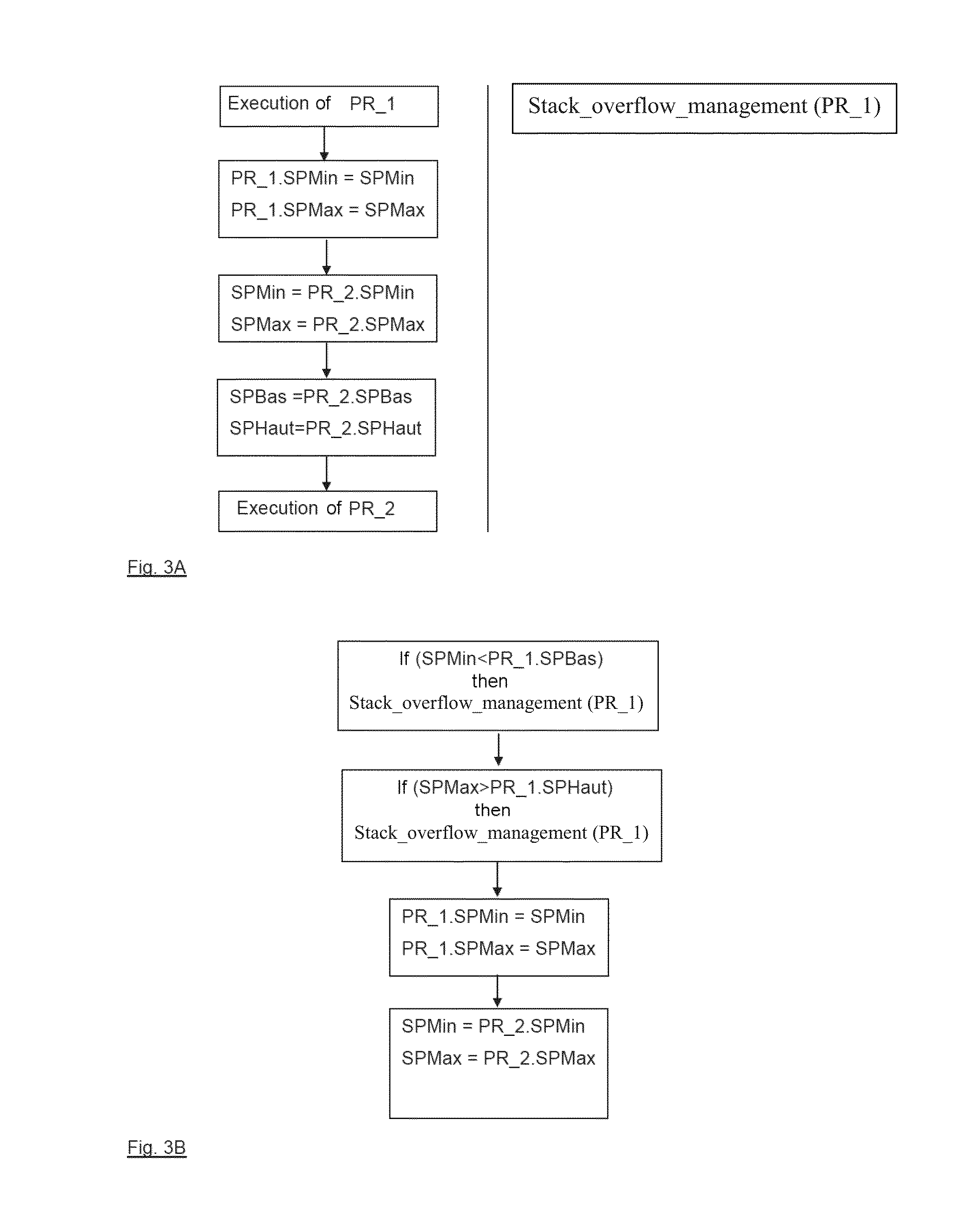Method of detecting stack overflows and processor for implementing such a method
- Summary
- Abstract
- Description
- Claims
- Application Information
AI Technical Summary
Benefits of technology
Problems solved by technology
Method used
Image
Examples
Embodiment Construction
[0037]The processor P in FIG. 1 includes—in a conventional manner—a central processor unit UC exchanging data with a memory MEM (which in this instance is not part of the processor itself), a set of N “generic” registers R1-RN and two registers RSP and SRSP for storing a stack pointer for the processes executed in user mode and in supervisor mode, respectively. The processor also includes two sets of dedicated registers used to detect stack overflows: a first set comprising the registers RHaut, RBas, RMin and RMax, for the user mode, and a second set comprising the registers SRHaut, SRBas, SRMin and SRMax, for the supervisor mode; as well as a hardware processor module MMT, shown as a separate component but which may in fact be integrated into the central processor unit. In the FIG. 1 embodiment, all exchanges of data are effected via the central processor unit UC; alternatively, data could be exchanged directly between the dedicated registers and the hardware processor module MMT a...
PUM
 Login to View More
Login to View More Abstract
Description
Claims
Application Information
 Login to View More
Login to View More - R&D
- Intellectual Property
- Life Sciences
- Materials
- Tech Scout
- Unparalleled Data Quality
- Higher Quality Content
- 60% Fewer Hallucinations
Browse by: Latest US Patents, China's latest patents, Technical Efficacy Thesaurus, Application Domain, Technology Topic, Popular Technical Reports.
© 2025 PatSnap. All rights reserved.Legal|Privacy policy|Modern Slavery Act Transparency Statement|Sitemap|About US| Contact US: help@patsnap.com



